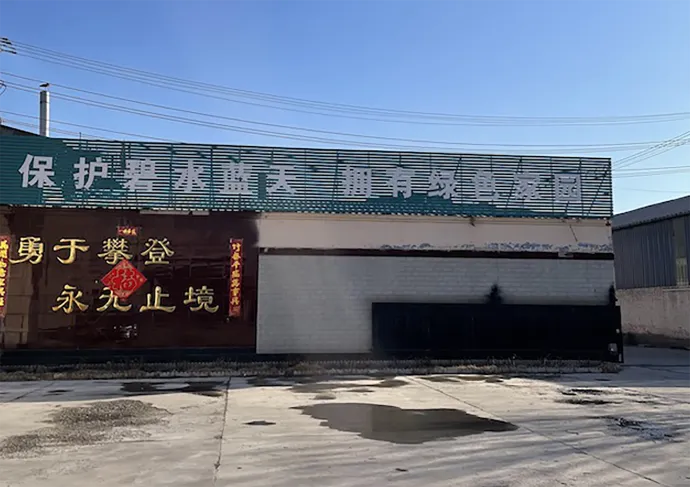- Afrikaans
- Albanian
- Amharic
- Arabic
- Armenian
- Azerbaijani
- Basque
- Belarusian
- Bengali
- Bosnian
- Bulgarian
- Catalan
- Cebuano
- Corsican
- Croatian
- Czech
- Danish
- Dutch
- English
- Esperanto
- Estonian
- French
- German
- Greek
- Hindi
- Indonesian
- irish
- Italian
- Japanese
- Korean
- Lao
- Malay
- Myanmar
- Norwegian
- Norwegian
- Polish
- Portuguese
- Romanian
- Russian
- Serbian
- Spanish
- Swedish
- Thai
- Turkish
- Ukrainian
- Uzbek
- Vietnamese
Dhj . 10, 2024 10:09 Back to list
fire rated ceiling access door
Understanding Fire-Rated Ceiling Access Doors
In modern construction and building safety, numerous components contribute to the effectiveness of fire prevention and safety measures. One such essential component is the fire-rated ceiling access door. These specialized doors are designed to maintain the integrity of fire-rated ceilings while providing access to essential services or equipment located above the ceiling. Understanding their importance, features, and applications can help building owners and contractors ensure compliance with safety regulations and enhance the overall safety of a facility.
What Are Fire-Rated Ceiling Access Doors?
Fire-rated ceiling access doors are designed to provide a secure access point while maintaining a particular fire-resistance rating. The fire-resistance rating indicates how long the door can withstand fire exposure—commonly ranging from 15 minutes to 3 hours—depending on the building's requirements and the materials used. These doors are typically constructed from materials such as steel, gypsum, or a composite that is tested and certified to meet stringent fire safety standards.
Importance of Fire-Rated Ceiling Access Doors
1. Compliance with Building Codes Many building codes require the installation of fire-rated doors in specific areas to prevent the spread of flames and smoke from one area to another. By integrating fire-rated ceiling access doors, contractors ensure that the building meets local and national fire safety regulations.
2. Safety and Protection In the event of a fire, these doors play a critical role in containing the fire to a specific area, allowing for a more effective response from emergency services. This containment helps in protecting the lives of building occupants and minimizing property damage.
3. Access to MEP Systems Many essential systems—including mechanical, electrical, and plumbing (MEP) systems—are installed above ceiling tiles. Fire-rated ceiling access doors provide easy access to these systems without compromising the fire-resistance of the ceiling. This accessibility is vital for maintenance, inspection, and repairs.
4. Reduced Liability By adhering to fire safety regulations and providing adequate access options, building owners can reduce their liability in the event of a fire. Insurance companies often consider compliance when assessing risk and determining premiums.
fire rated ceiling access door

Features of Fire-Rated Ceiling Access Doors
Fire-rated ceiling access doors come with several features that enhance their effectiveness, including
- Insulation A robust insulation layer is crucial in preventing heat transfer and maintaining fire-resistance ratings. - Self-Closing Mechanisms Many models are equipped with self-closing mechanisms to ensure that the door automatically shuts after being opened, thereby preventing smoke and flames from spreading. - Seals Intumescent seals expand when exposed to heat, filling gaps around the door frame and further preventing the passage of smoke and fire. - Durability Constructed from sturdy materials, fire-rated ceiling access doors are designed to withstand everyday wear and tear while still performing their fire-resistance duties effectively.
Applications in Various Settings
Fire-rated ceiling access doors find applications in a myriad of settings, including
- Commercial Buildings Office complexes, retail stores, and warehouses often require these access doors for maintenance, as well as to meet fire safety codes. - Industrial Facilities Manufacturing plants and factories use fire-rated doors to access overhead structures and systems critical for operations. - Healthcare Facilities Hospitals and clinics have strict fire safety protocols, making fire-rated access doors vital for safeguarding patients and staff.
Conclusion
Fire-rated ceiling access doors are an integral part of modern fire safety architecture. By combining accessibility with fire protection, they play a significant role in ensuring that buildings comply with safety regulations, provide safe maintenance access, and protect lives and property in the event of a fire. For building owners and contractors, understanding the importance and features of these doors is essential to upholding safety standards and ensuring peace of mind in their facilities.
-
PVC Laminated Gypsum Ceiling Board OverviewNewsApr.11,2025
-
Mineral Fiber Ceiling Tiles Price Analysis and ComparisonsNewsApr.11,2025
-
Crafts of Mineral Fiber Ceiling Tile ManufacturingNewsApr.11,2025
-
Difference Between Gypsum and PVC CeilingNewsApr.11,2025
-
An Overview of Mineral Fiber Ceiling TilesNewsApr.11,2025
-
Advantages of PVC Gypsum CeilingNewsApr.08,2025







